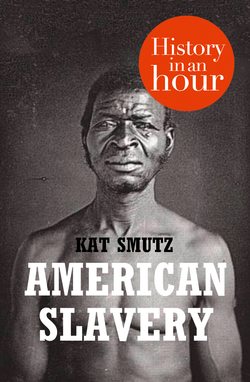Читать книгу American Slavery: History in an Hour - Kat Smutz, Kat Smutz - Страница 11
ОглавлениеThe Abolitionists
Until the American Revolution, there had been minimal opposition to slavery. However, a movement began to grow, as early as 1700, when the first anti-slavery tract was published by Samuel Seawall in the colony of Massachusetts. Seawall condemned slavery as ‘man selling’. The colony of Georgia had originally banned slavery, but in 1750, repealed the ban. In 1774, the First Continental Congress called for a ban on the slave trade as part of the Declaration and Resolves Act that was passed regarding the rights of the colonies.
Slavery was one of the contributing factors that motivated the colonies to declare their independence from Britain. The issue was not over the morality of the institution of slavery, as it would be during the American Civil War, but over Britain’s attempts to control the commerce that flowed in and out of the colonies. Ships in New England took goods to the French West Indies where they were exchanged for rum. The rum was then transported to West Africa and traded for slaves. In 1764, the British Parliament passed the Sugar Act in an effort to control trade with the French West Indies.
More attempts to control the colonies followed, until 1774 when the First Continental Congress suspended trade with Britain. In 1776, the Continental Congress passed an act that banned importation of slaves into ‘any of the thirteen United Colonies’. Thomas Jefferson’s original draft of the Declaration of Independence indicted King George III of England of forcing slavery on the colonies, saying that the king was determined to keep open ‘a market where men should be bought and sold.’ The controversial passage was removed by the Continental Congress.
Documents used to forge the new nation, the United States, frequently referred to liberty for all men, not specifically white men. And yet it soon became clear that liberty and justice and freedom for all actually meant only those who were white and male. The exclusion of African-Americans, Native Americans and women brought into sharp focus the differences between those who were entitled to freedom and those who were not.
The colonies had used the inhumanity of slavery as one of their causes during the American Revolution. However, when it was over, they became reluctant to end slavery and the slave trade. While some states were amenable to the idea, others threatened to boycott the new Union if slavery was abolished. A final agreement was made that there would be no limitations on the slave trade in the United States until 1808. The boundaries for tolerance of slavery in the new nation had been established.
The Mason-Dixon Line, a boundary that had been established in 1767 to settle a dispute between Pennsylvania and several neighbouring states, became known as the line of division between ‘the North’ and ‘the South’, as well as the imaginary boundary between states where slavery was legal and where it was not.
The movement to abolish slavery had begun in the North and was stronger there as the economy revolved around industry and there was little need for slave labour. The South was an agrarian society, dependent economically upon crops such as tobacco, cotton, sugar, rice and indigo, all of which were labour intensive. There were slaveholders throughout the United States, and some of them saw slavery as wrong. But they were left with the question of how to rid themselves of it without destroying the economy of the South. Many of them had been born into the practice, it had always been a part of their lives, and the idea that it was wrong was confusing for some.
